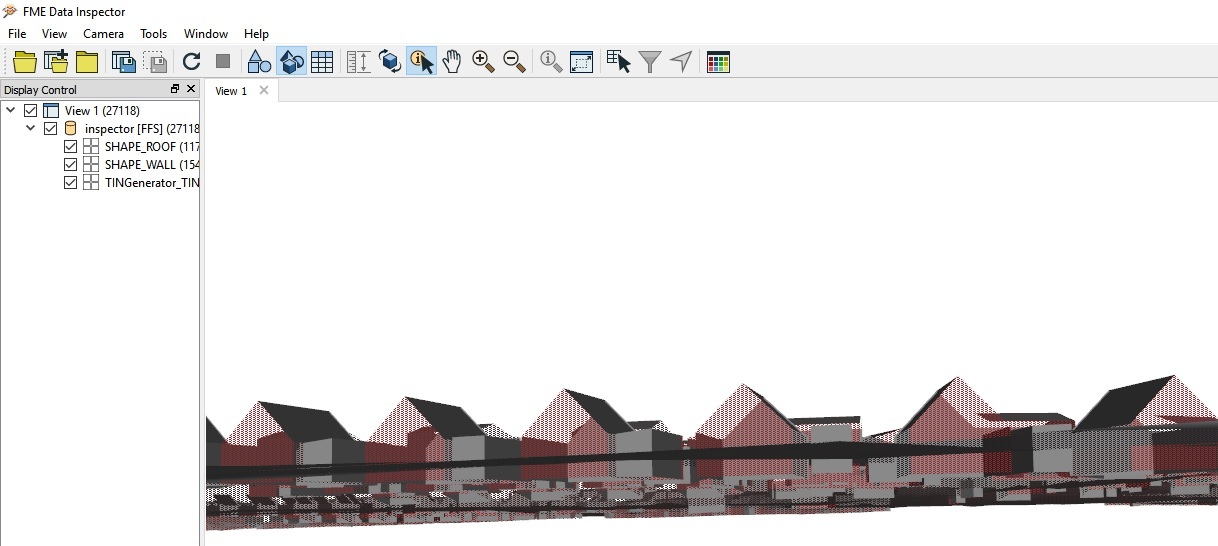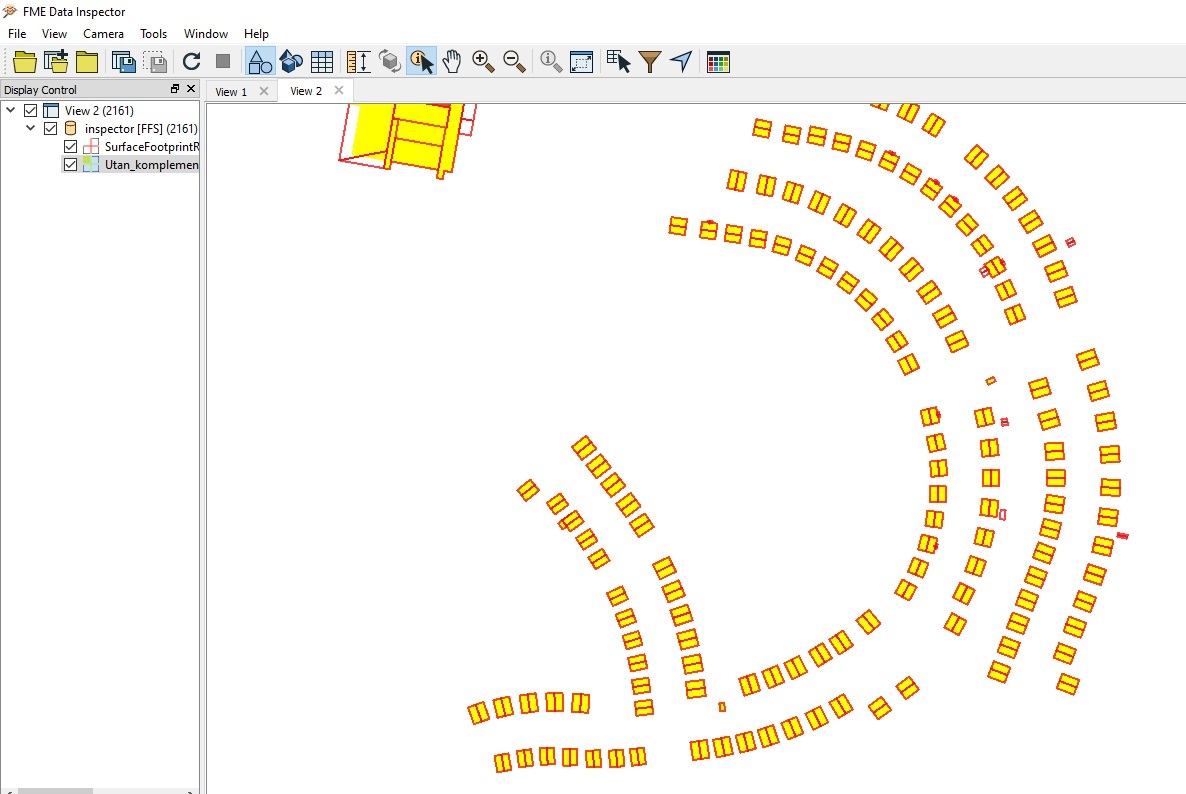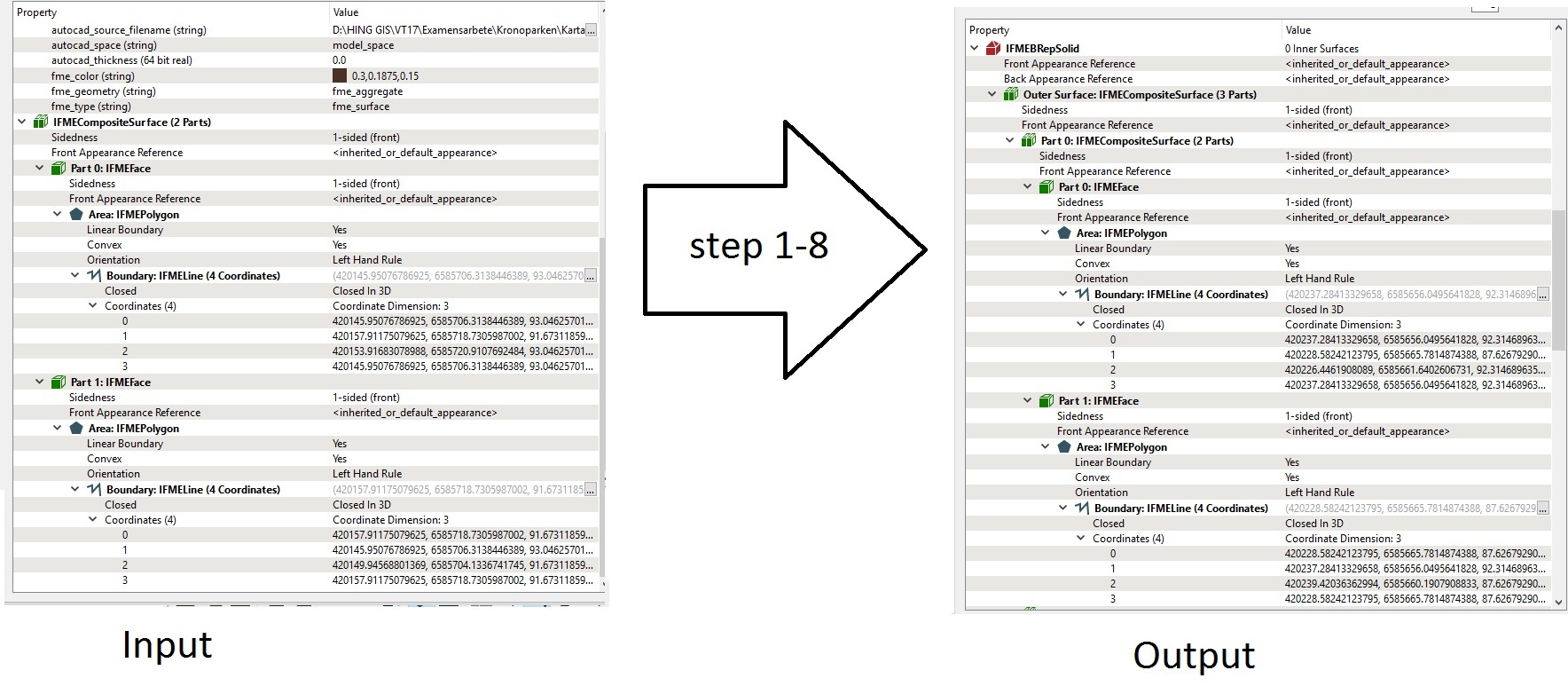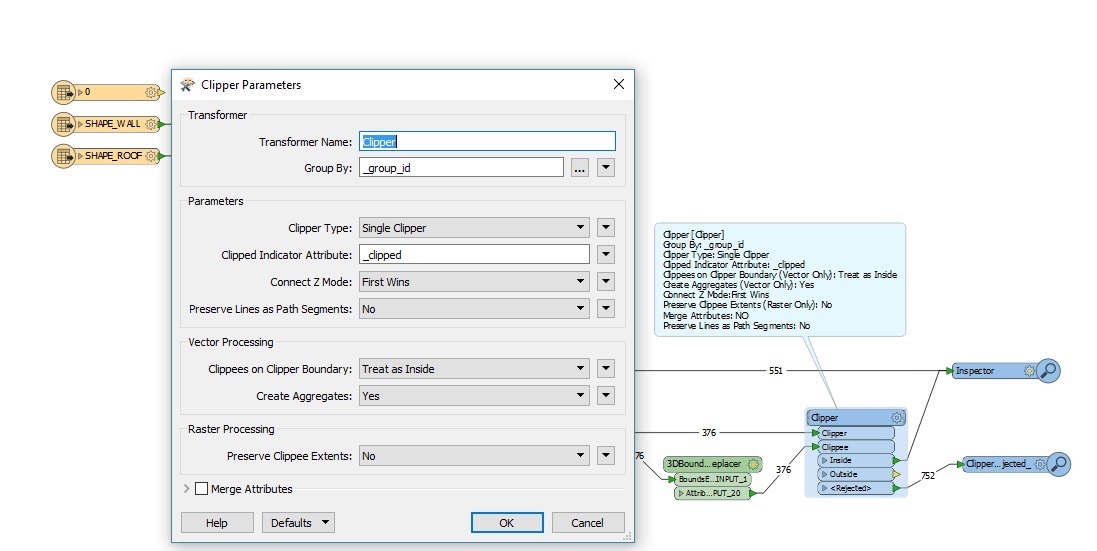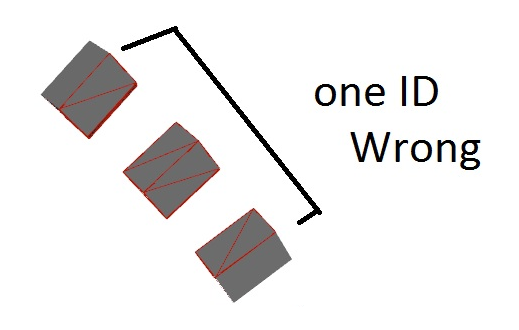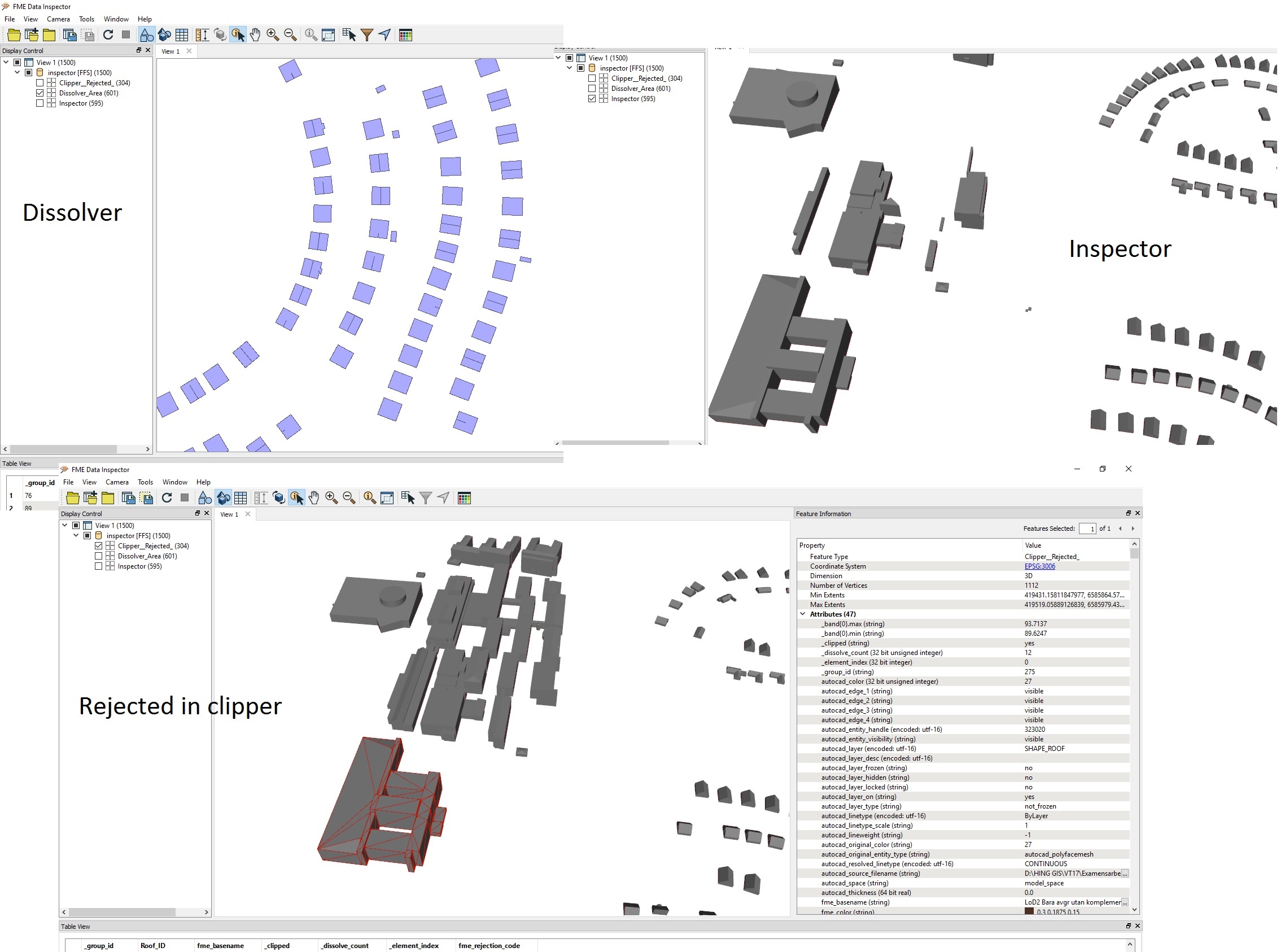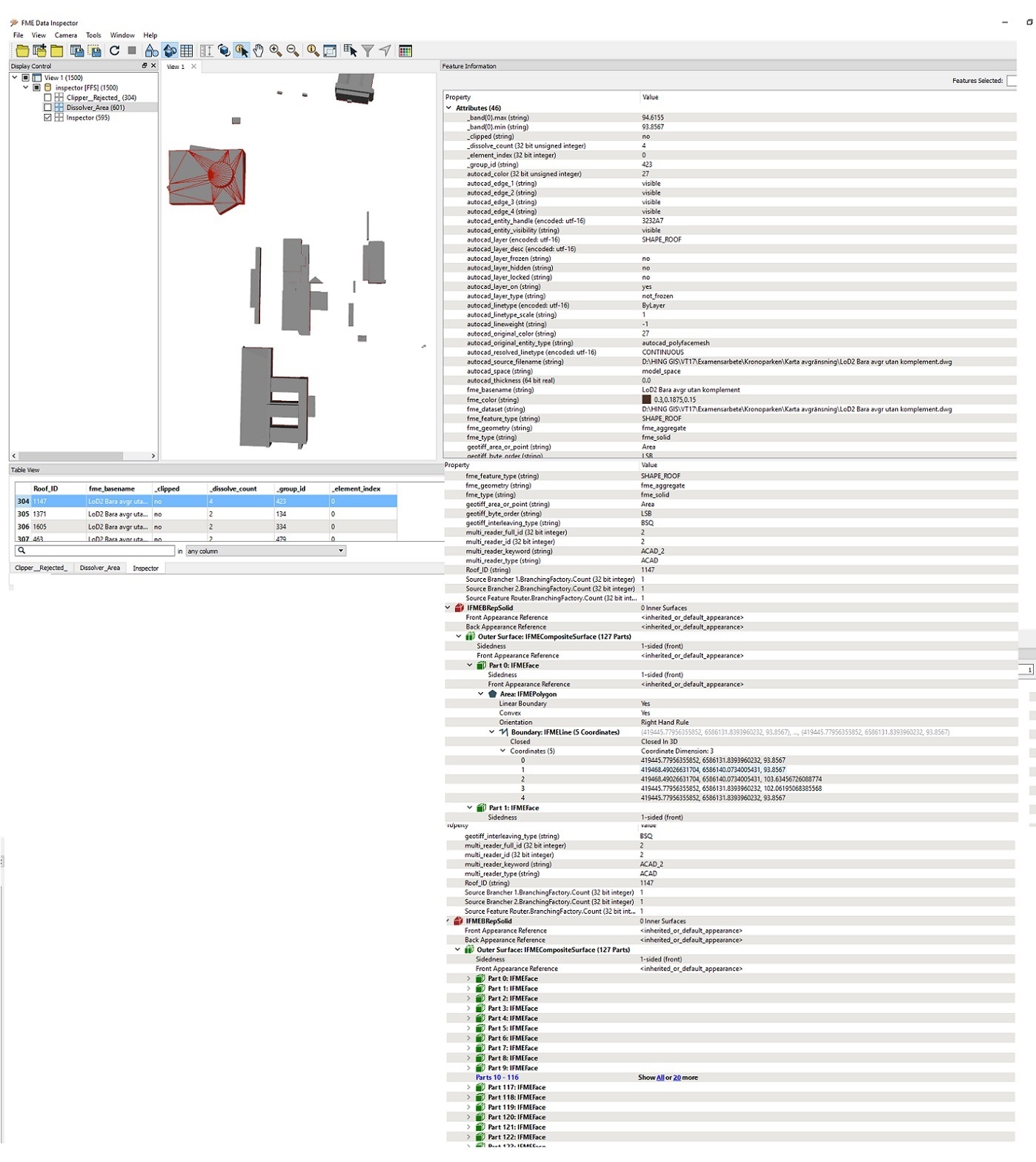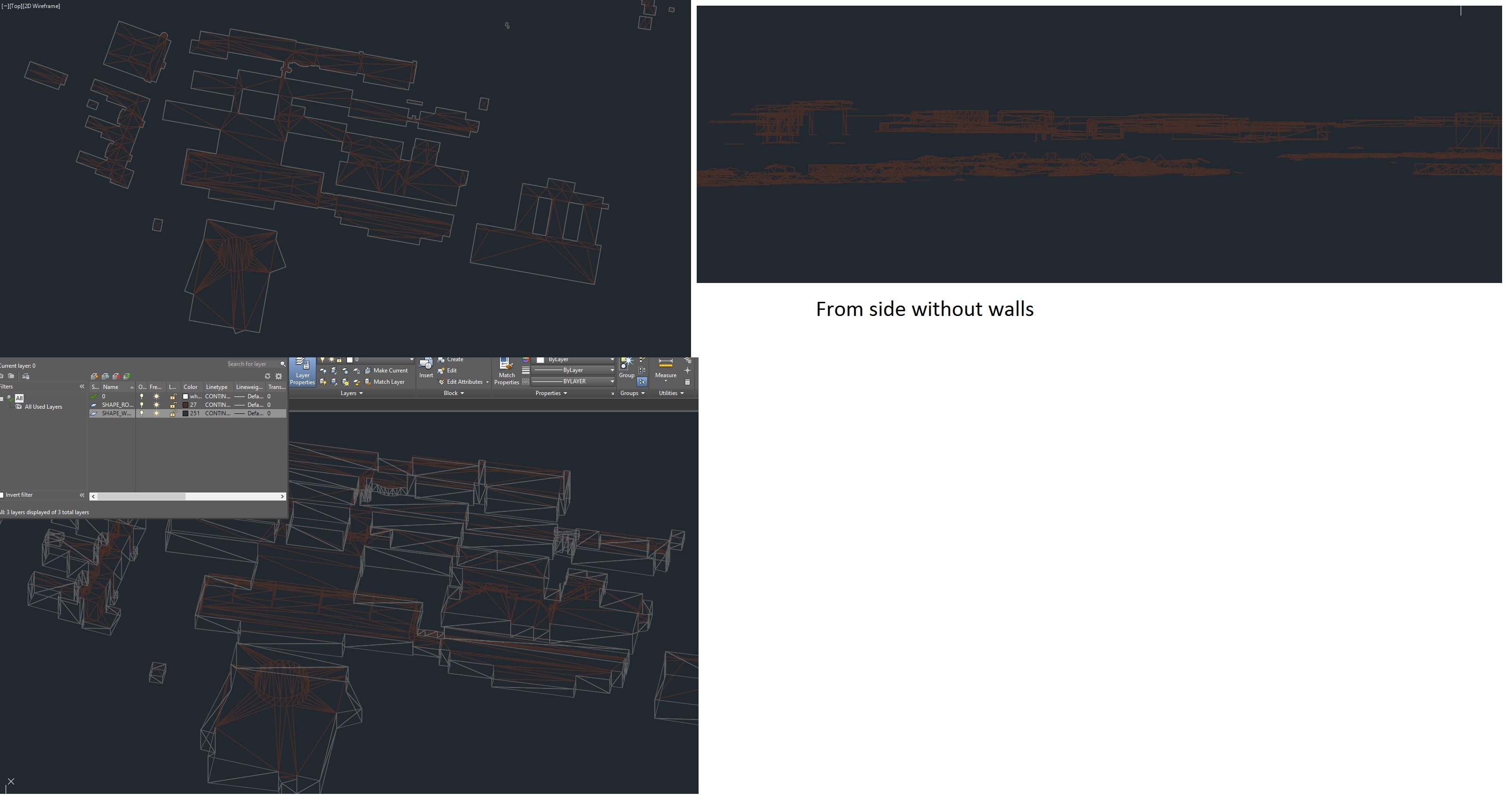The area in last screenshot is the only buildings with complex roof. All the other buildings are flat, shed or gable.
The whole area looks like this:
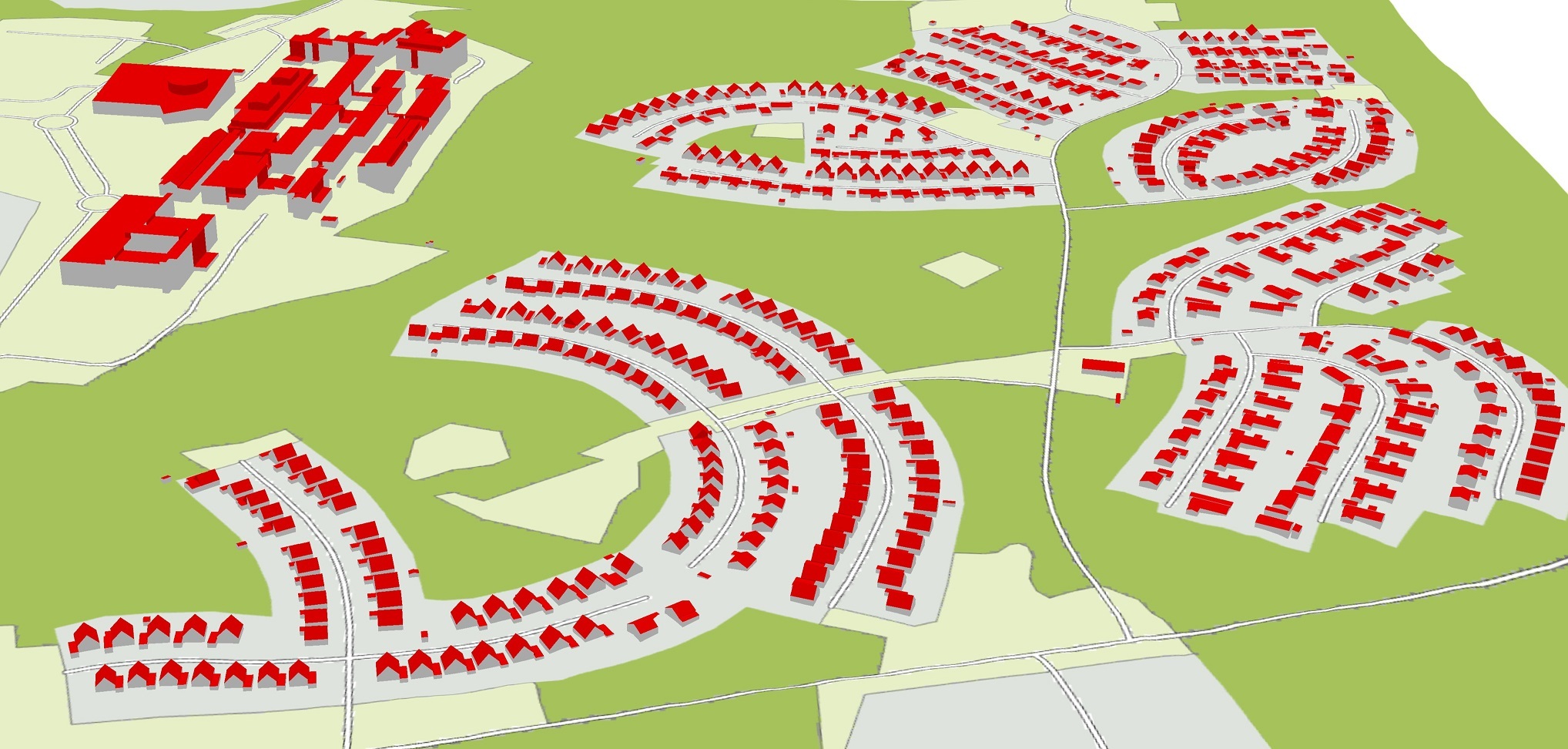
Here is some more data over the complex area. I hope you can see the attributes.
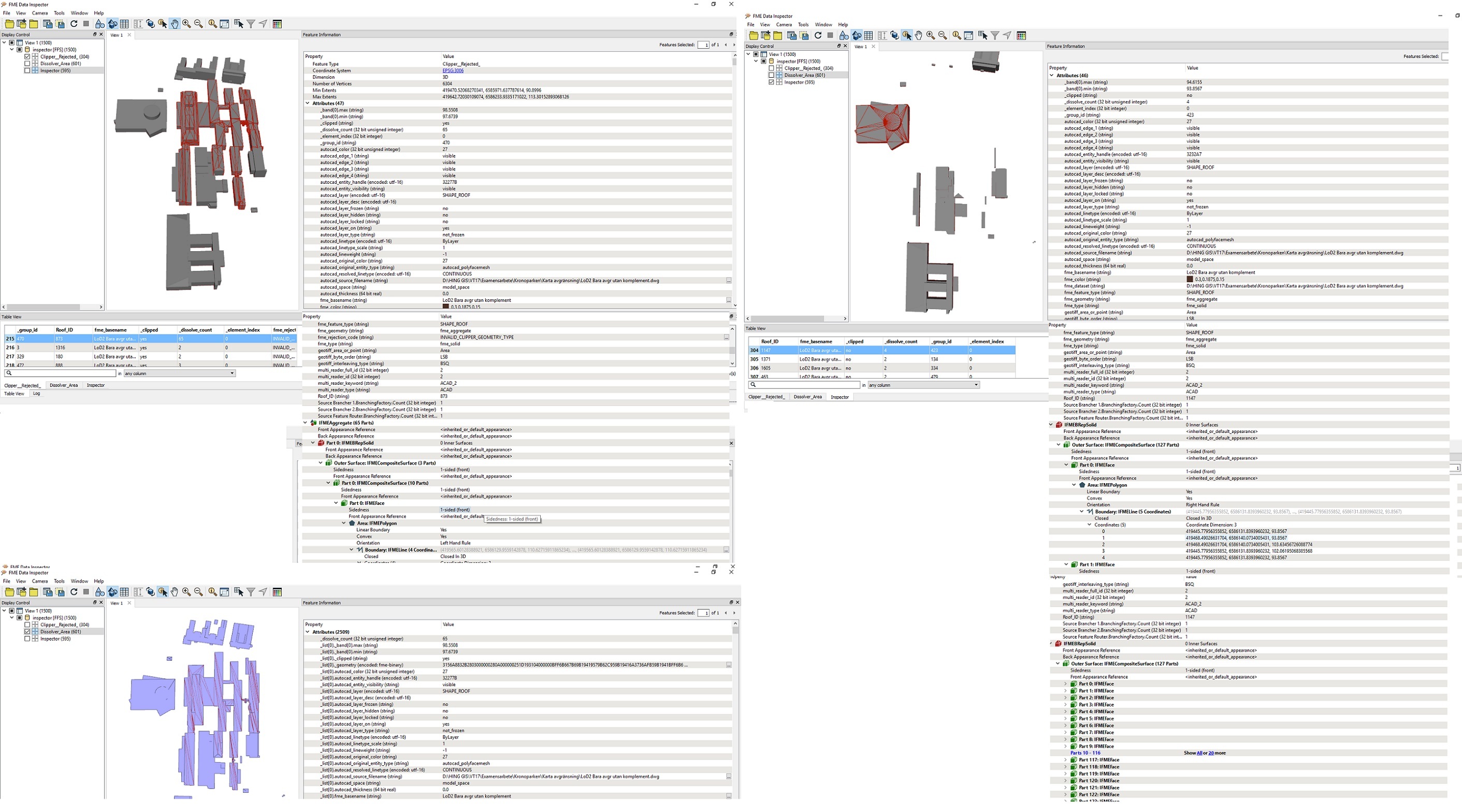
What I want to do is compare this buildings, as I see as "reference" because of low Measurement uncertainty (made by a company) with my buildings i made by myself with LiDAR-data. I have tried to use the spatial filter to transfer attributes based on spatial location. But because (I think) the reference buildings are in segments (see pic below).
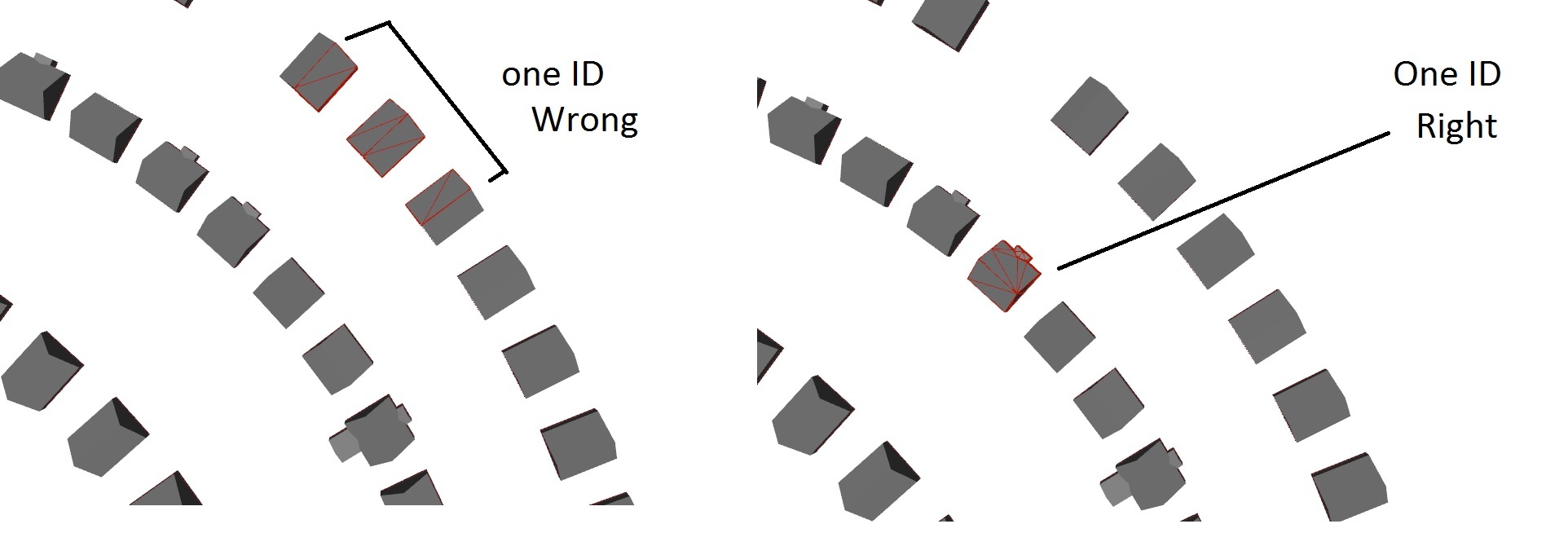
The steps 1-8 you showed me first was really helpful because i could run the volume counter and manually count the volume of every segment from one building to get the result (I will use volume to see difference between my buildings and the reference buildings). But to make the reference buildings as solid I think it's easier to automatically count the volumes of every building and compare the based on spatial location.
I just wanted to explain what my goal is with this.
I really appreciate your help.
